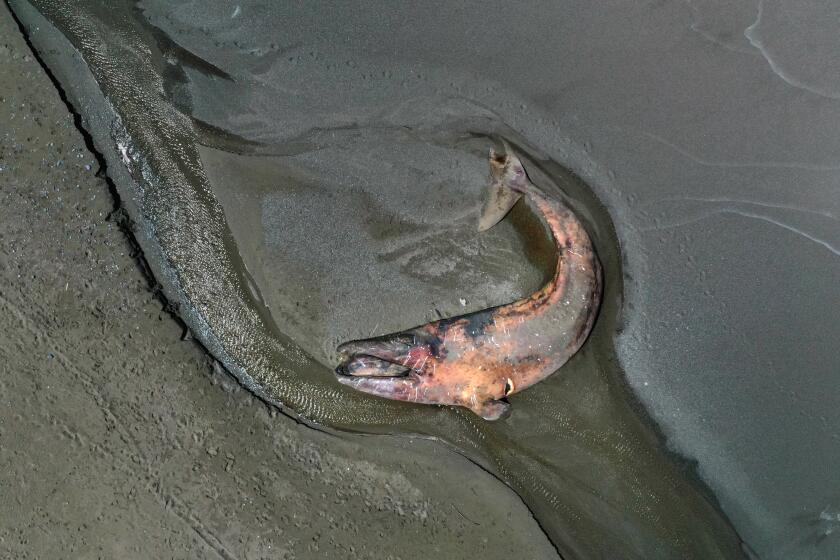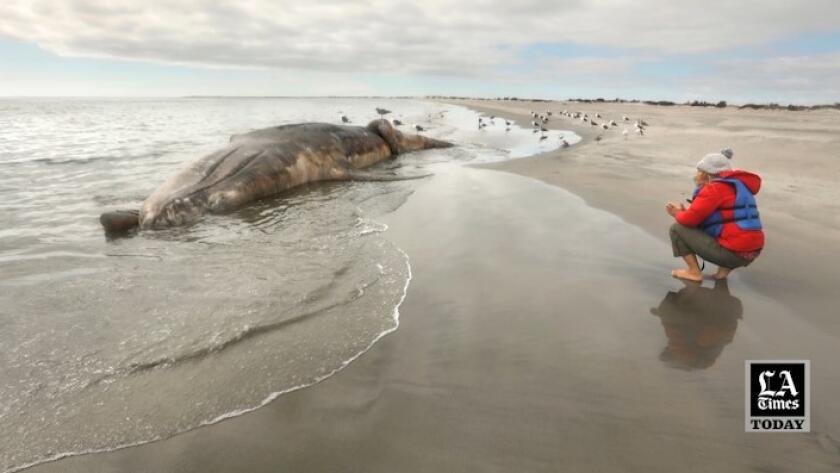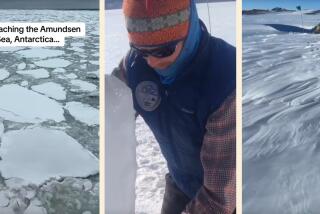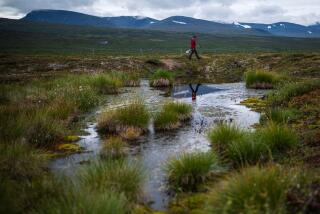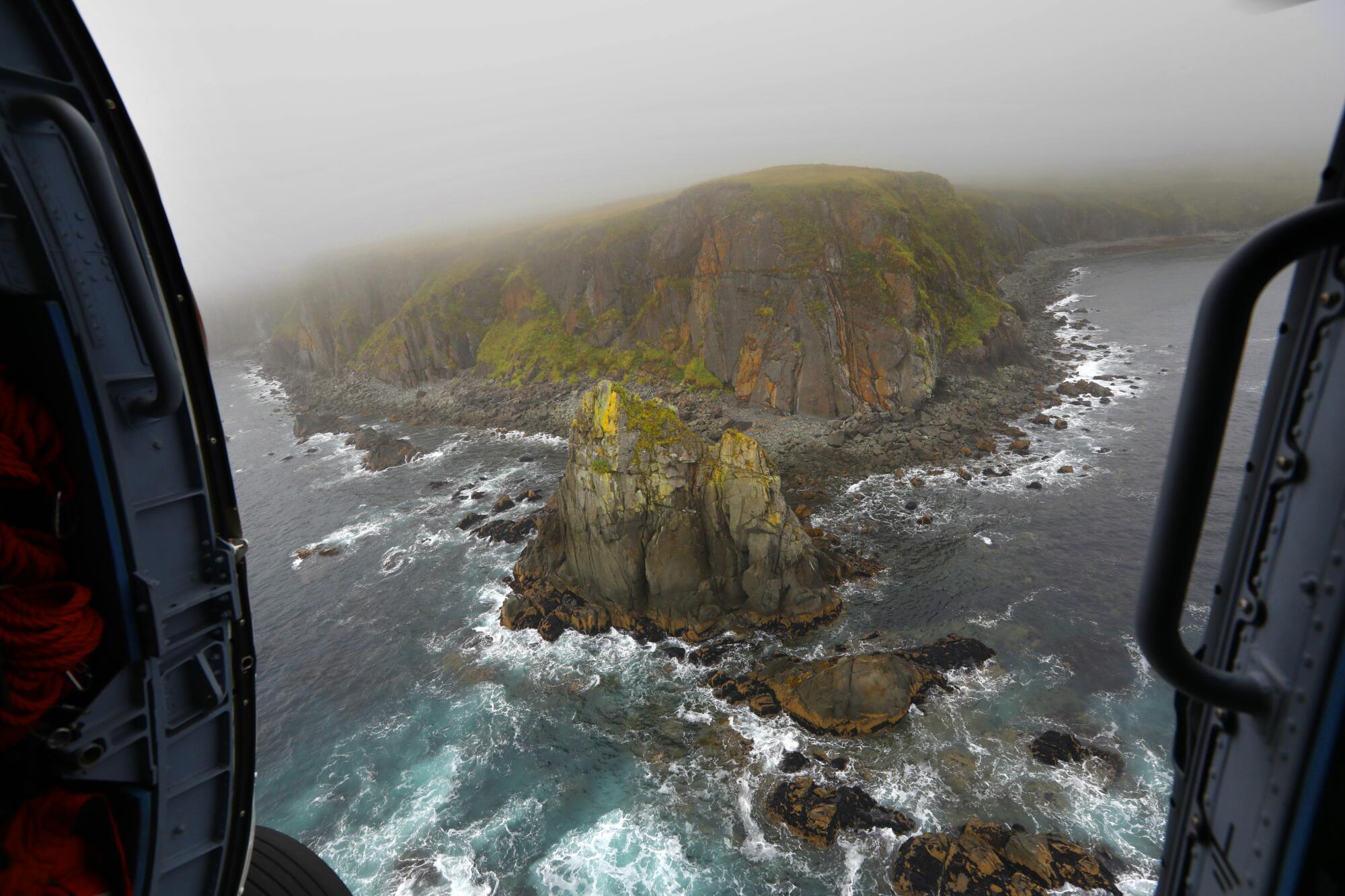
KODIAK ISLAND, Alaska — Forces profound and alarming are reshaping the upper reaches of the North Pacific and Arctic oceans, breaking the food chain that supports billions of creatures and one of the world’s most important fisheries.
In the last five years, scientists have observed animal die-offs of unprecedented size, scope and duration in the waters of the Beaufort, Chukchi and northern Bering seas, while recording the displacement and disappearance of entire species of fish and ocean-dwelling invertebrates. The ecosystem is critical for resident seals, walruses and bears, as well as migratory gray whales, birds, sea lions and numerous other animals.
Historically long stretches of record-breaking ocean heat and loss of sea ice have fundamentally changed this ecosystem from bottom to top and top to bottom, say researchers who study its inhabitants. Not only are algae and zooplankton affected, but now apex predators such as killer whales are moving into areas once locked away by ice — gaining unfettered access to a spoil of riches.
Scientists describe what’s going on as less an ecosystem collapse than a brutal “regime shift” — an event in which many species may disappear, but others will replace them.
“You can think of it in terms of winners and losers,” said Janet Duffy-Anderson, a Seattle-based marine scientist who leads annual surveys of the Bering Sea for the National Oceanic and Atmospheric Administration’s Alaska Fisheries Science Center. “Something is going to emerge and become the more dominant species, and something is going to decline because it can’t adapt to that changing food web.”
A team from The Times traveled to Alaska and spoke with dozens of scientists conducting field research in the Bering Sea and high Arctic to better understand these dramatic changes. Their findings suggest that this vast, near-polar ecosystem — stable for thousands for years and resilient to brief but dramatic swings in temperature — is undergoing an irreversible transition.
“It’s like the gates of hell have been opened,” said Lorenzo Ciannelli, a fisheries oceanographer at Oregon State University, referring to a once ice-covered portion of the Bering Sea that has largely disappeared.
Since 2019, federal investigators have declared unexplained mortality events for a variety of animals, including gray whales that migrate past California and several species of Arctic seals. They are also examining large die-offs — or “wrecks,” as avian biologists call them — in dozens of seabird species including horned puffins, black-legged kittiwakes and shearwaters.
At the same time, they are documenting the disappearance of the “cold pool” — a region of the northern Bering Sea that for thousands of years has served as a barrier that protects cold-water species, such as Arctic cod and snow crab, from subarctic species, such as walleye pollock and Pacific cod. In the last five years, many of these Arctic species have almost entirely disappeared from the northern Bering, while populations of warmer-dwelling fish have proliferated.
In 2010, a federal survey estimated there were 319,000 metric tons of snow crab in the northern Bering Sea. As of this year, that number had dropped by more than 75%. Meanwhile, a subarctic fish, the Pacific cod, has skyrocketed — going from 29,124 metric tons in 2010 to 227,577 in 2021.
Whether the warming has diminished these super-cold-water species or forced them to migrate elsewhere — farther north or west, across the U.S.-Russia border, where American scientists can no longer observe them — remains unclear. But scientists say animals seem to be suffering in these more distant polar regions too, according to sporadic reports from the area.
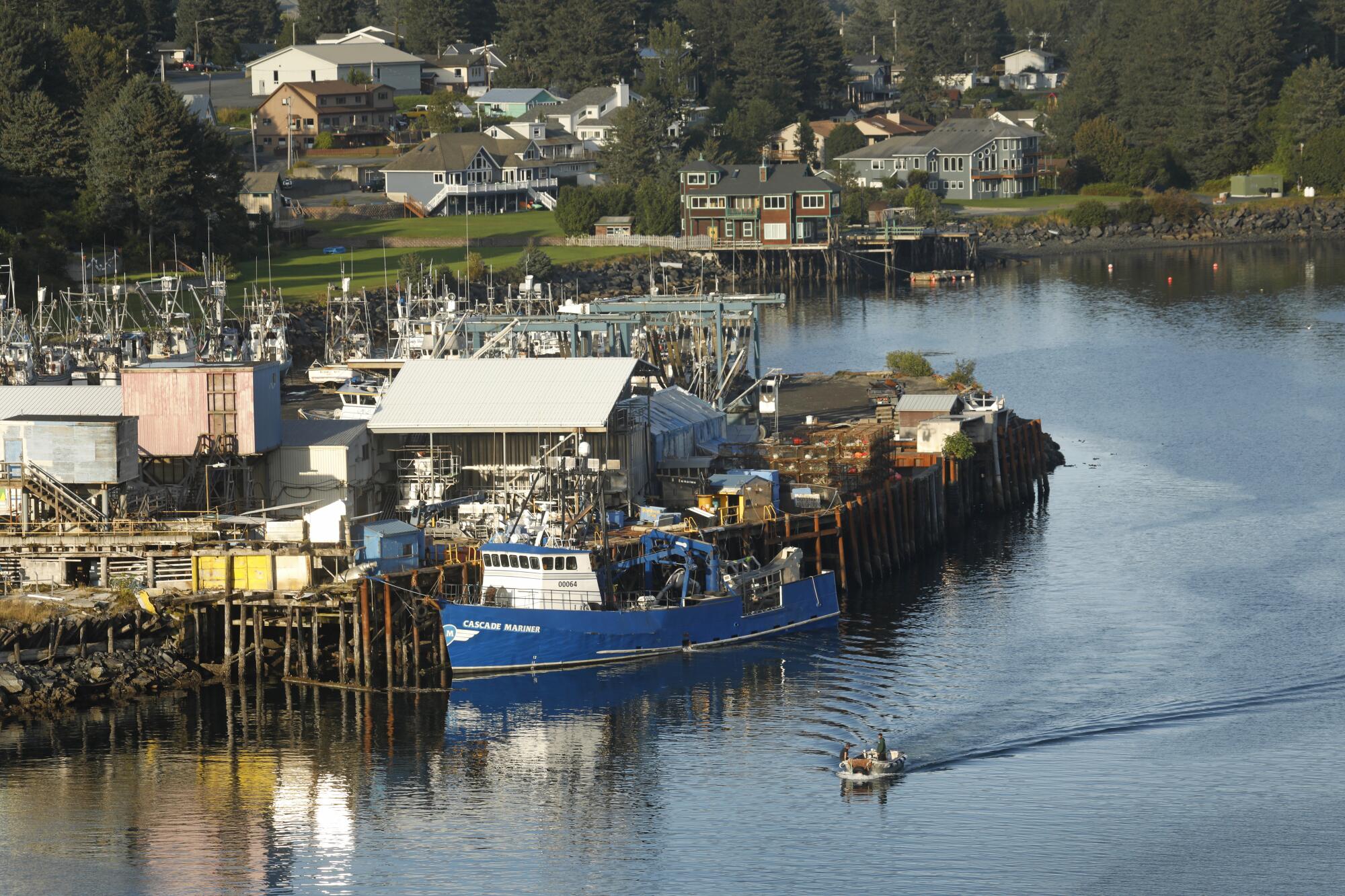
Which gets to the basic challenge of studying this ecosystem: For so long, its remoteness, freezing temperatures and lack of winter sunlight have made the region largely inaccessible. Unlike in temperate and tropical climates, where scientists can obtain reasonably accurate population counts of many species, the Arctic doesn’t yield its secrets easily. That makes it hard to establish baseline data for scores of species — especially those with little commercial value.
“That part is really frustrating,” said Peter Boveng, who studies Arctic seals for NOAA’s Alaska Fisheries Science Center. He said he and his colleagues wonder if the information they are now gathering is truly baseline data, or has already been shifted by years of warming.
Only recently have he and other scientists had the technology to conduct these kinds of counts — using cameras instead of observers in airplanes, for instance, or installing sound buoys across the ice and sea to capture the movement of whales, seals and bears.
“We’re only just beginning to understand what is happening up there,” said Deborah Giles, a killer whale researcher at the University of Washington’s Center for Conservation Biology. “We just couldn’t be there or see things in the way a drone can.”
The dramatic shifts that Giles, Boveng and others are observing have ramifications that stretch far beyond the Arctic. The Bering Sea is one of the planet’s major fishing grounds — the eastern Bering Sea, for instance, supplies more than 40% of the annual U.S. catch of fish and shellfish — and is a crucial food source for thousands of Russians and Indigenous Alaskans who rely on fish, birds’ eggs, walrus and seal for protein.
“Globally, cold-water ecosystems support the world’s fisheries. Halibut, all of the cod, all of the benthic crabs, lobsters … this is the majority of the food source for the world,” said NOAA’s Duffy-Anderson.
The potential ripple effect could shut down fisheries and leave migrating animals starving for food. These include gray whales and short-tailed shearwaters — a bird that travels more than 9,000 miles every year from Australia and New Zealand to feed in the Arctic smorgasbord before flying home.
“Alaska is a bellwether for what other systems can expect,” she added. “It’s really just a beginning.”
::
Flying along the southeastern coastline of Alaska’s Kodiak Island, Matthew Van Daele — wearing a safety harness tethered to the inside of a U.S. Coast Guard MH-60T Jayhawk — leaned out the helicopter door, scanning the beaches below for dead whales and seals.
The clouds hung low, so the copter hugged close to the sandstone cliffs that rise from this green island, which gets about 80 inches of rain and 60 inches of snowfall every year. Although few dead animals were spotted on this September afternoon, plenty of furry brown Kodiak bears could be seen bounding across open fields and along the beaches, trying to escape the ruckus of the approaching chopper.
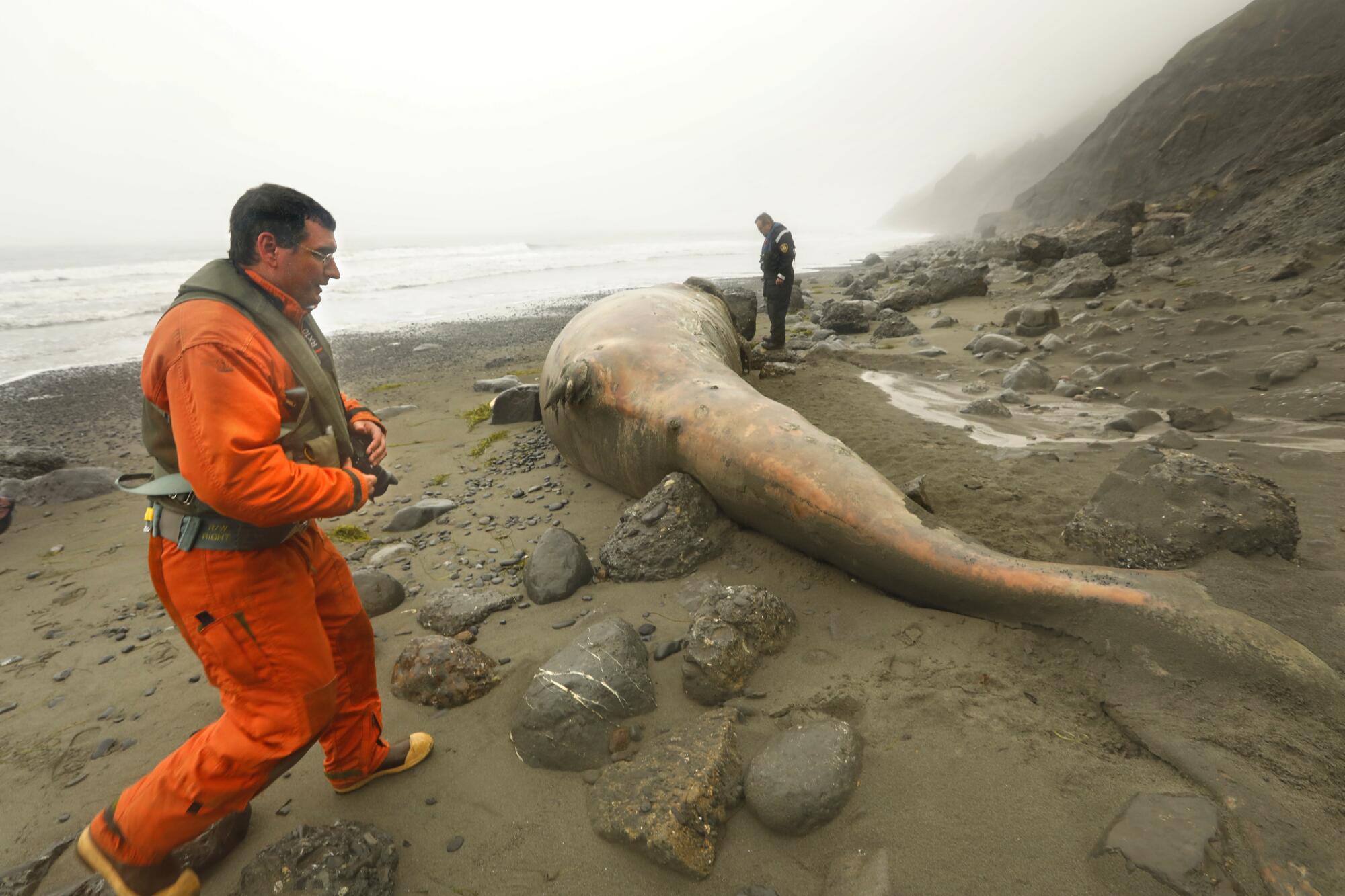
“There’s one!” yelled Van Daele, natural resources director for the Sun’aq Tribe, speaking through the intercom system to the chopper’s pilots as he pointed to a rotting whale carcass on the beach.
The pilots circled and deftly landed on a little strip of sand, careful to keep the rotor blades from hitting the eroding wall of rock on the beach’s edge.
Joe Sekerak, a NOAA enforcement officer, jumped out after Van Daele, holding a rifle should hungry Kodiak bears arrive to challenge the small team in its attempt to examine the whale carcass.
According to Van Daele, the whale had been dead several weeks; her body was in poor shape, with little fat.
Since 2019, hundreds of gray whales have died along North America’s Pacific coastline, many appearing skinny or underfed.
Although researchers have not determined the cause of the die-off, there are ominous signs something is amiss in their high Arctic feeding grounds.
Gray whales have one of the longest migrations of any mammal and have proved themselves adaptable. But can they adjust to rapidly changing oceans?
“We’re used to change around here,” said Alexus Kwatchka, a commercial fisherman who has navigated Alaskan waters for more than 30 years. He noted some years are cold, some are warm; sometimes all of the fish seem to be in one area for a few years, and then resettle elsewhere.
This fall has been extremely cold in Alaska; the town of Kotzebue, in the northwest, hit minus 31 degrees on Nov. 28 — the record low for that date. This follows several years of record-setting warmth in the region.
What is new, said Kwatchka, is the persistence of this change. It’s not like it gets super warm for one or two years and then goes back to normal, he said. Now the changes last, and he said he’s encountering things he’s never seen before — such as gray whales feeding along the beaches of Kodiak, or swimming in packs.
“Usually there are whales just scattered around the island,” he said. “But I’ve seen them kind of bunched up and podded up, and I’m seeing them in places where I don’t ordinarily see them.”
A gray whale off Kodiak Island in Alaska. (KC Bierlich / Oregon State University)
In September, an emaciated young male gray whale was seen off a beach near Kodiak, behaving as though it were trying to feed, scooping material from the shallow shore bottom and filtering it through his baleen, a system many leviathans use to separate food from sand and water.
Three weeks later, that same young male washed ashore dead, not far from where he had been spotted previously.
Dozens of scientists validated Kwatchka’s observations, describing these periods of intense ocean heat and cooling as “stanzas,” which are growing more extreme and lasting longer than those of the past.
That’s a problem, said Duffy-Anderson, because the longer you stress a system, the deeper and broader the impacts — and therefore the harder for it to bounce back.
While it’s always possible the current stanza is temporary and the ecosystem could reset itself, “that is unlikely,” said Rick Thoman, an Alaska climate specialist at the University of Alaska Fairbanks.
As a diver and photographer, I feel an urgency to document the Arctic’s vulnerable ice, which is vanishing due to climate change.
Due to atmospheric warming, the world’s oceans hold so much excess heat that it’s improbable the Chukchi Sea will ever be covered again with thick, multiyear ice, he said. Nor will we see many more years where the spring ice extends across the Bering, he said.
Even though Nome saw one of its coldest Novembers in 100 years of record keeping, and King Salmon — a town of roughly 300 near Katmai National Park and Preserve — recorded its all-time lowest November temperatures, “the escalator of warming is going up,” Thoman said.
He conjured up an image of a 5-year-old running up and down an ascending escalator. “Somebody standing off of the escalator might say, oh, it looks like the kid is going down. But as we know, the escalator is continuing to go up.”
“What we’ve seen in the Bering Sea in recent years is,” he added, “unprecedented.”
::
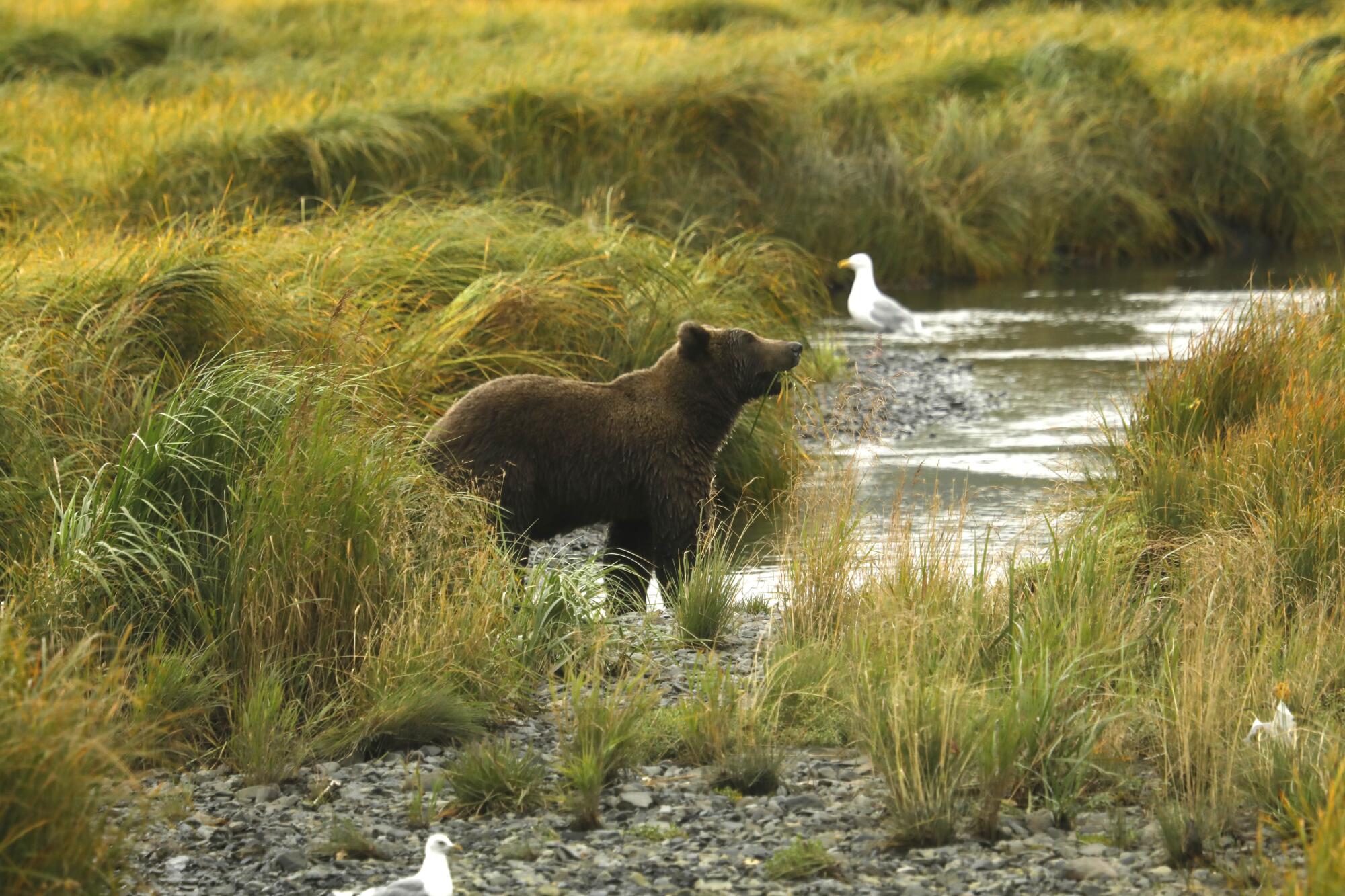
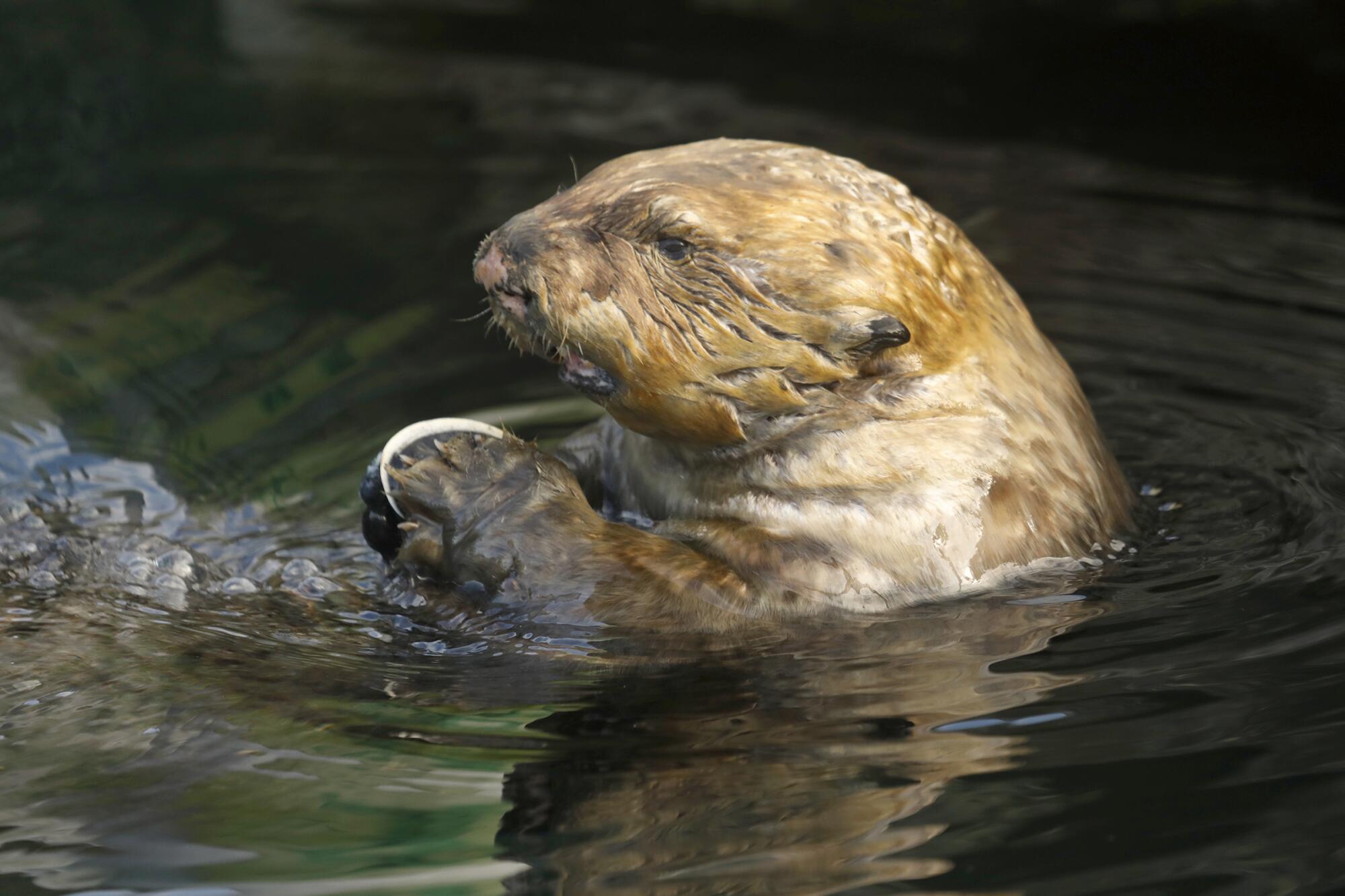
Lee Cooper and Jackie Grebmeier, researchers at the University of Maryland Center for Environmental Science, have visited these waters every year since the 1980s, when they were graduate students at the University of Alaska. Their initial proposal centered on one basic question: What makes these Arctic-like waters of the northern Bering Sea so productive?
It was tough work. So much of the ocean was frozen, and therefore inaccessible. Other researchers faced the same challenge.
“When we started out, we couldn’t get north into the Bering Strait area because of ice until mid-June,” said Kathy Kuletz, a bird biologist with the U.S. Fish and Wildlife Service, who has been researching the northern Bering Sea and high Arctic since 2006 and studying Alaskan birds since 1978. “Even then, it wasn’t until late June that you could get into the Chukchi. And that’s certainly not been the issue ... since, let’s see, about 2015 or so.”
Researchers are focused on ice — or the lack of it — because the frozen ocean is the foundation of the region’s rich ecosystems. It not only keeps the waters beneath it cool, but a layer of algae grows on the underside of these ice sheets — the key to the entire food web.
For eons, as the sun moved south in autumn and the temperatures dropped in the high latitudes, Arctic sea ice thickened near the North Pole. At its edges, it reached its frosty fingers into the inlets along the Chukchi and Beaufort seas, winding its way south through the Bering Strait and into the northern Bering Sea. By March, the northern Bering Sea was typically a vast field of white ice, its edges marked by broken sheets that had been pushed into a vertical position by whipping winds and churning currents below.
But for the last 50 years, as the region’s warm stanzas have increased in duration and intensity, that seasonal ice has dwindled.
A 2020 study published in the journal Science documented a reduction in ice extent unlike any other in the last 5,500 years: Its extent in 2018 and 2019 was 60% to 70% lower than the historical average. In an Arctic report card released just this week, federal scientists called the region’s changes “alarming and undeniable.”
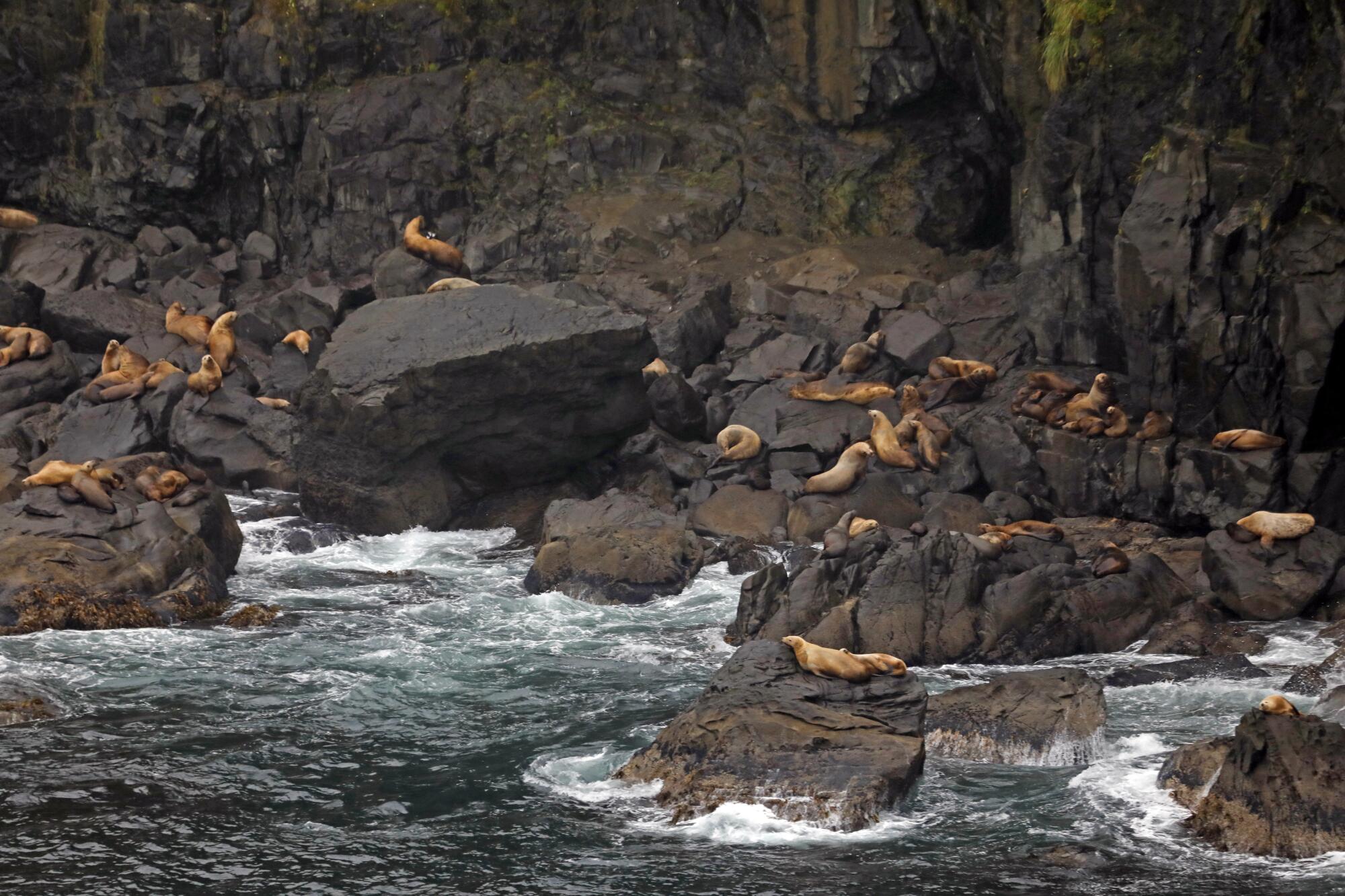
Long before the sea was named for the 18th century Danish cartographer and Russian naval explorer Vitus Jonassen Bering, the icy water body consisted of two distinct ecosystems — one subarctic, the other resembling the high Arctic. Fish in the subarctic zone — such as Pacific cod — were deterred by the frigid temperatures of the cold pool, which hover just below 32 degrees. But other fish — such as Arctic cod, capelin and flatfish — evolved to thrive in this environment, with the cold pool serving as a protective barrier.
Now that “thermal force field” has all but vanished.
Lyle Britt, director of the Resource Assessment and Conservation Engineering division of the Alaska Fisheries Science Center, leads annual trawl surveys in the Bering Sea, part of a U.S. effort to systematically monitor commercial fish populations and their ecosystems. The federal government has conducted a survey of the eastern Bering Sea every year since 1982 — with the exception of 2020, when COVID grounded the personnel and boats. Federal surveying of the northern Bering Sea began in 2010 amid concerns about the loss of seasonal sea ice; the government has surveyed it a total of five times.
With each survey, Britt and his mariner colleagues navigate the sea as if tracing over the same piece of graph paper, year after year, with 520 evenly dispersed stations at 20-mile intervals. At each one — 376 in the eastern Bering Sea and 144 in the northern Bering Sea — they stop to collect environmental data, such as bottom- and surface-water temperatures, as well as a sampling of fish and invertebrates, which they count and weigh.
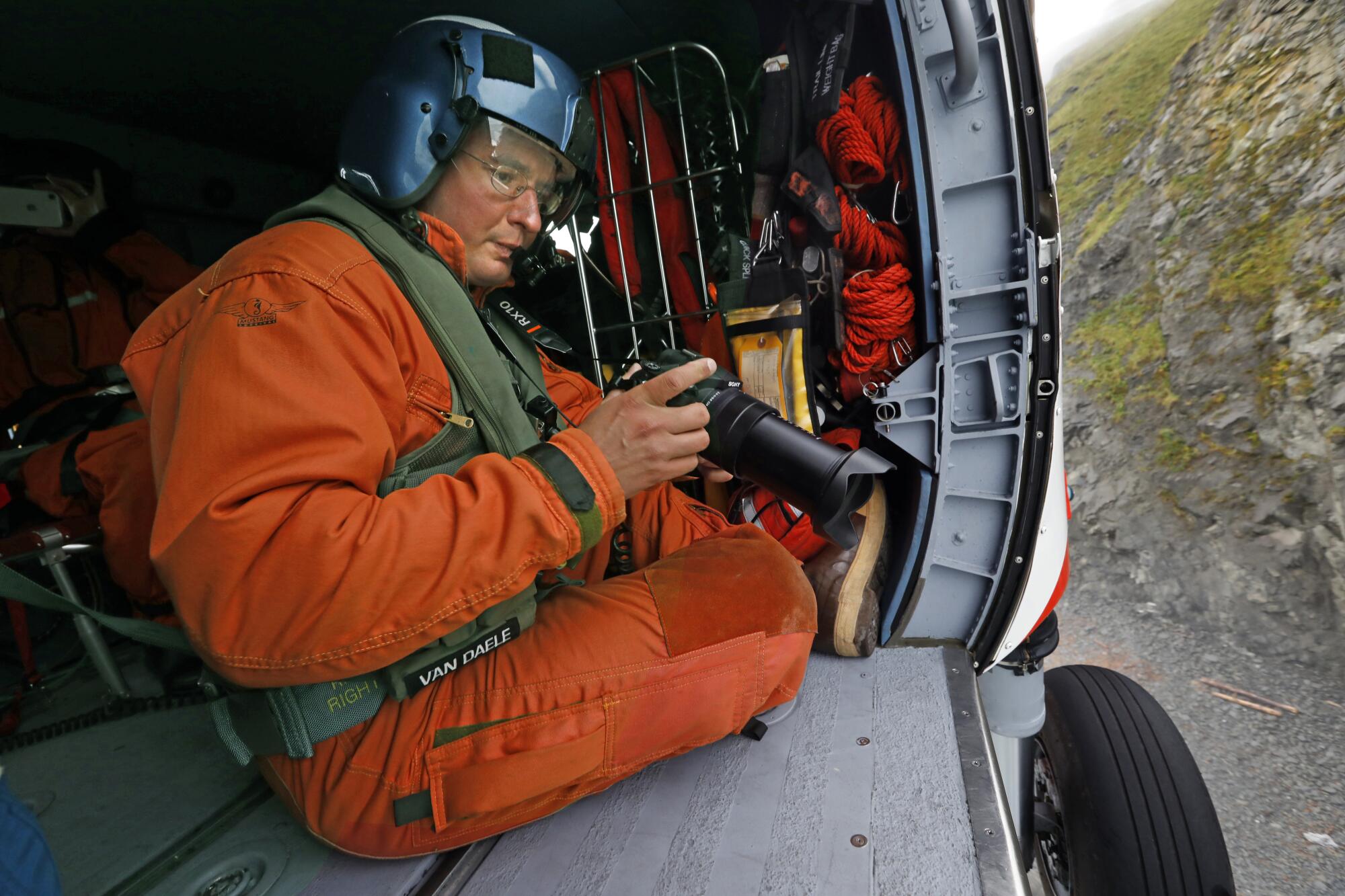
Data from a Bering Sea mooring shows the average temperature throughout the water column has risen markedly in the last several years: in 2018, water temperatures were 9 degrees above the historical average.
Not only have the scientists noticed, so too have the fish.
Consider the plight of the walleye pollock — also known as Alaska pollock — one of the region’s most important fisheries.
While adult walleye pollock are averse to super cold water, juveniles are known to gravitate to the interior of the cold pool. In this protective chilly dome, the young fish are not only walled off from cold-hating predators, but as their metabolisms slow in the frigid temperatures, they can gorge on and grow from the Arctic ecosystem’s fatty, rich food sources.
With the cold pool gone, “there’s no refuge” for small fish seeking to grow big, said Duffy-Anderson. “Instead, the adult fish can now move into those spaces.”
So what has happened to the Arctic fish? Have they just moved north, following the cold water?
It’s not that simple, said Britt. The northern Bering Sea is very shallow. When ice is not there to cover it, it warms up quickly — and can exceed temperatures detected in the subarctic southern Bering Sea.
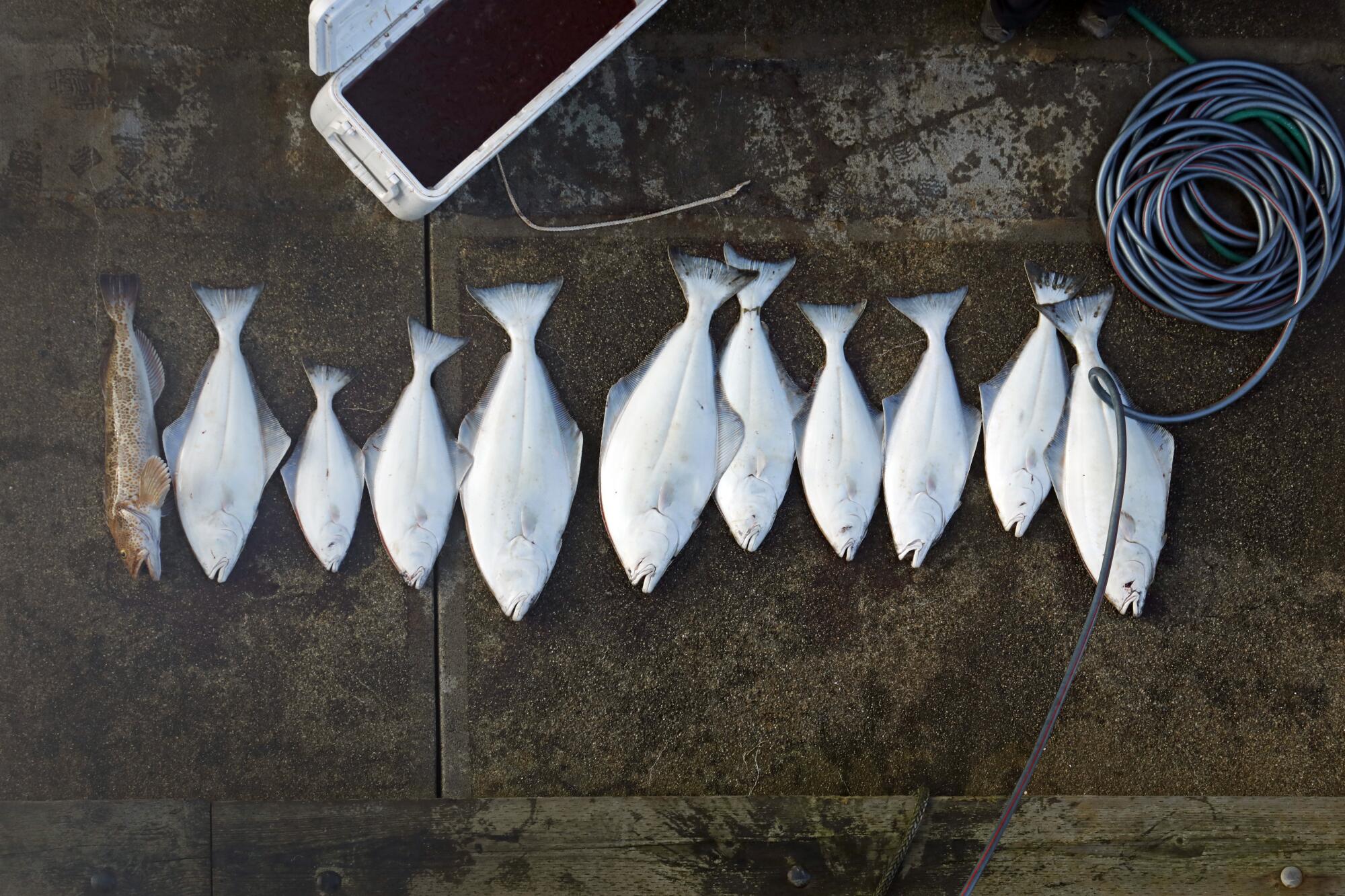

“So we don’t fully understand all the implications of why the fish are moving in the directions and patterns that they are,” he said. But in some places — particularly the places that once harbored cold-loving fish such as Arctic cod and capelin — they are just gone.
In a healthy Arctic system, thousands of bottom-dwelling species — bottom fish, clams, crabs and shrimp-like critters — feast on the lipid-rich algae that falls from the ice to the bottom of the sea. But in a warm-water system, the algae gets taken up in the water column, said Duffy-Anderson.
The healthy system is highly energy-efficient — with sediment-dwelling invertebrates and bottom fish feeding on the rain of algae, and then birds and large-bodied mammals, such as walrus and whales, scooping them up.
“One of the things I’m really concerned about is ... that the whole food web dynamic kind of comes apart,” she said. As warmer waters and animals infiltrate the system, “you put more links in the food chain, and then less and less of that energy is transferred efficiently. And that is what we’re beginning to see.”
Ice is also essential habitat for some Arctic mammals. As with gray whales, several types of ice seals — which include ringed, spotted and bearded seals — started showing up skinny or dead around the Chukchi and Bering seas in 2018, spurring a federal investigation. These Arctic-dwelling species rely on sea ice to pup, nurse and molt. Without it, they spend more time in the cold water, where they expend too much energy. Young seals are particularly vulnerable; their chances for survival plummet without the ice, said the Alaska Fisheries Science Center’s Boveng.
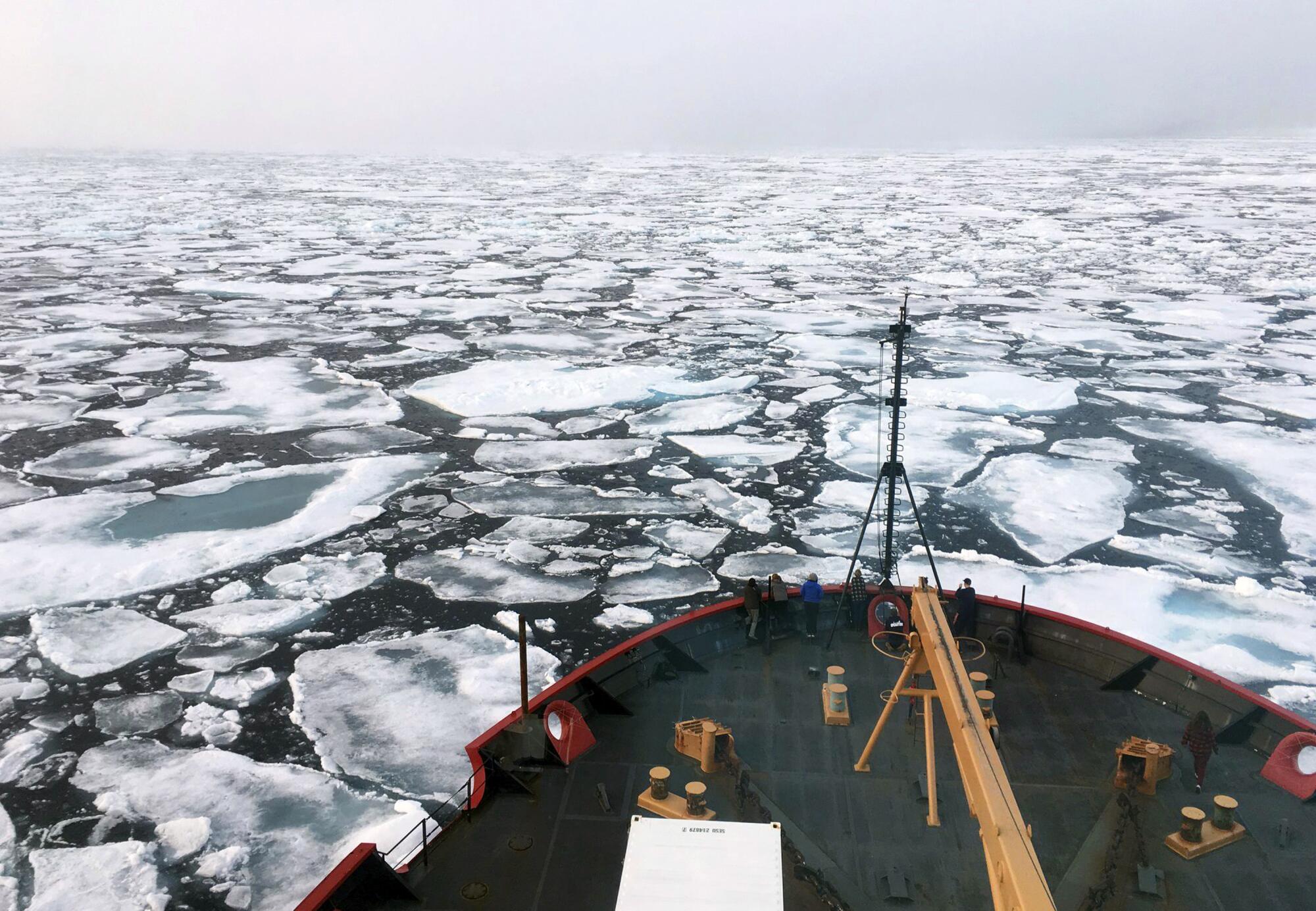
There are also reports of killer whales — also known as orcas— showing up in areas they haven’t been spotted before, feeding on beluga whales, bowheads and narwhals, said Giles, the University of Washington orca researcher.
“They are finding channels and openings through the ice, and in some cases preying on animals that have never seen killer whales before,” she said.
Climate scientists worldwide have long warned that as the planet warms, humans and wildlife will become more vulnerable to infectious diseases previously confined to certain locations and environments. That dynamic could be a factor in the massive die-off of birds in the Bering Sea — experts estimate at least tens of thousands of birds have died there since 2013.
The culprit was avian cholera, a disease not previously detected in these high latitudes, and one that elsewhere rarely fells seabirds such as thick-billed murres, auklets, common eiders, northern fulmars and gulls.
Toxic algae associated with warmer waters has also been detected in a few dead birds (and some healthy birds) in the Bering Sea, said Robb Kaler, a wildlife biologist with the U.S. Fish and Wildlife Service — and may have been responsible for the death of a person living on St. Lawrence Island.
Kuletz, the U.S. Fish and Wildlife biologist who has been observing birds in Alaska since the late 1970s, said she’s never before seen the large-scale changes of recent years. In 2013, the dead birds did not show signs of being emaciated, but in 2017, hundreds to thousands more began to wash up dead on beaches with clear signs of starvation, she said.
“There’ve always been little peaks” of die-offs that would last a year or so, but then things would go back to normal, she said. “These animals are resilient. They can forgo breeding if they aren’t getting enough nutrition.”
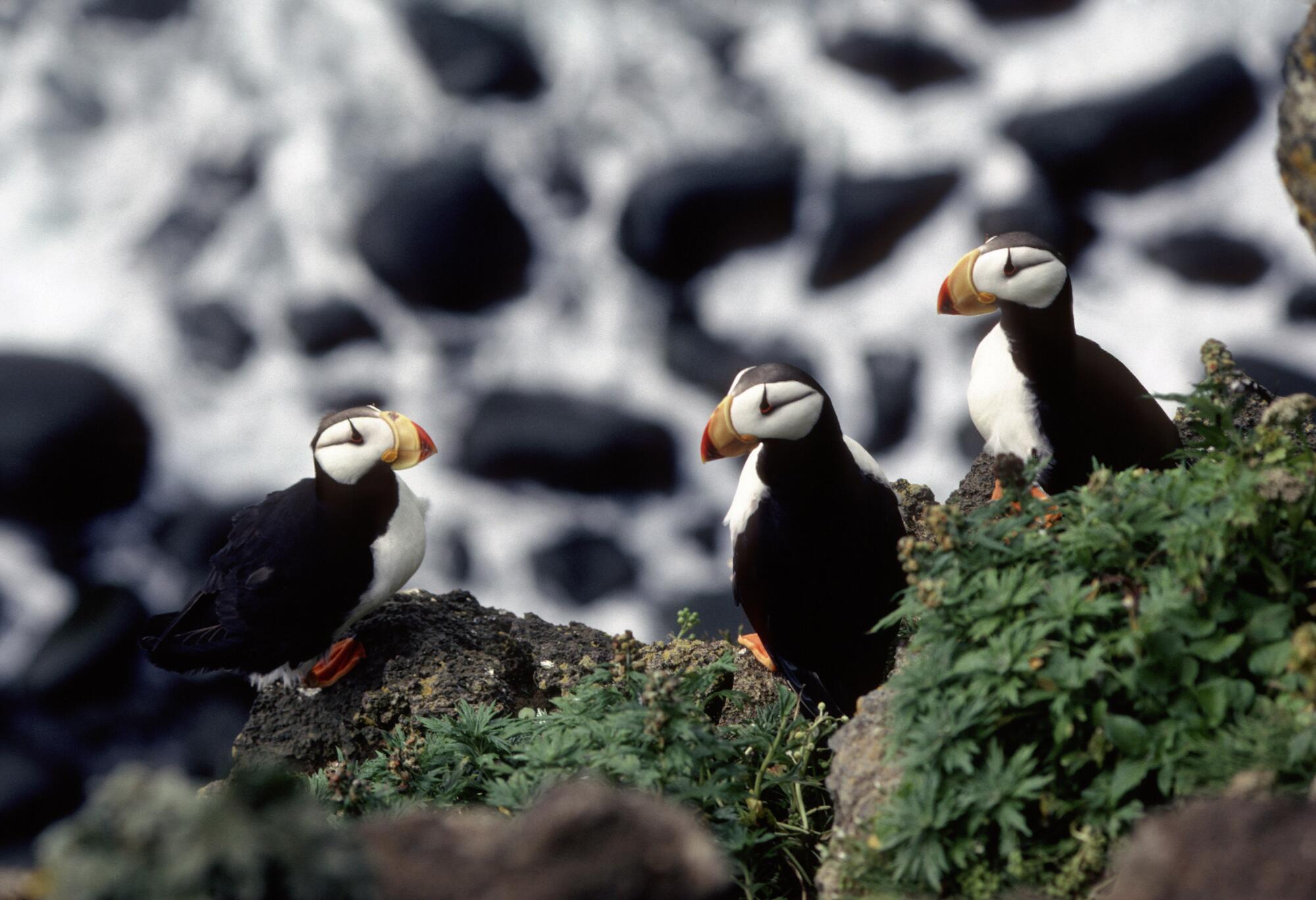
Not all bird species are suffering. Albatross, which are surface feeders, are booming, underscoring for Kuletz the idea that there could be “winners and losers” in the changing region. Albatross do not nest in Alaska. They only come in the summer to feed, and are therefore not tied to eggs or nests while looking for food.
Yet for some scientists, it isn’t easy to reconcile how a system in balance could so quickly go off the rails, even if some species adapt and thrive as others struggle.
“For me, it’s actually very emotional,” said Thoman, the University of Alaska climate specialist, recalling his elementary school days, when he read Jack London’s “To Build a Fire” and other stories from the Arctic.
“The environment that he described, the environment that I saw going through National Geographics in the 1970s? That environment doesn’t exist anymore.”
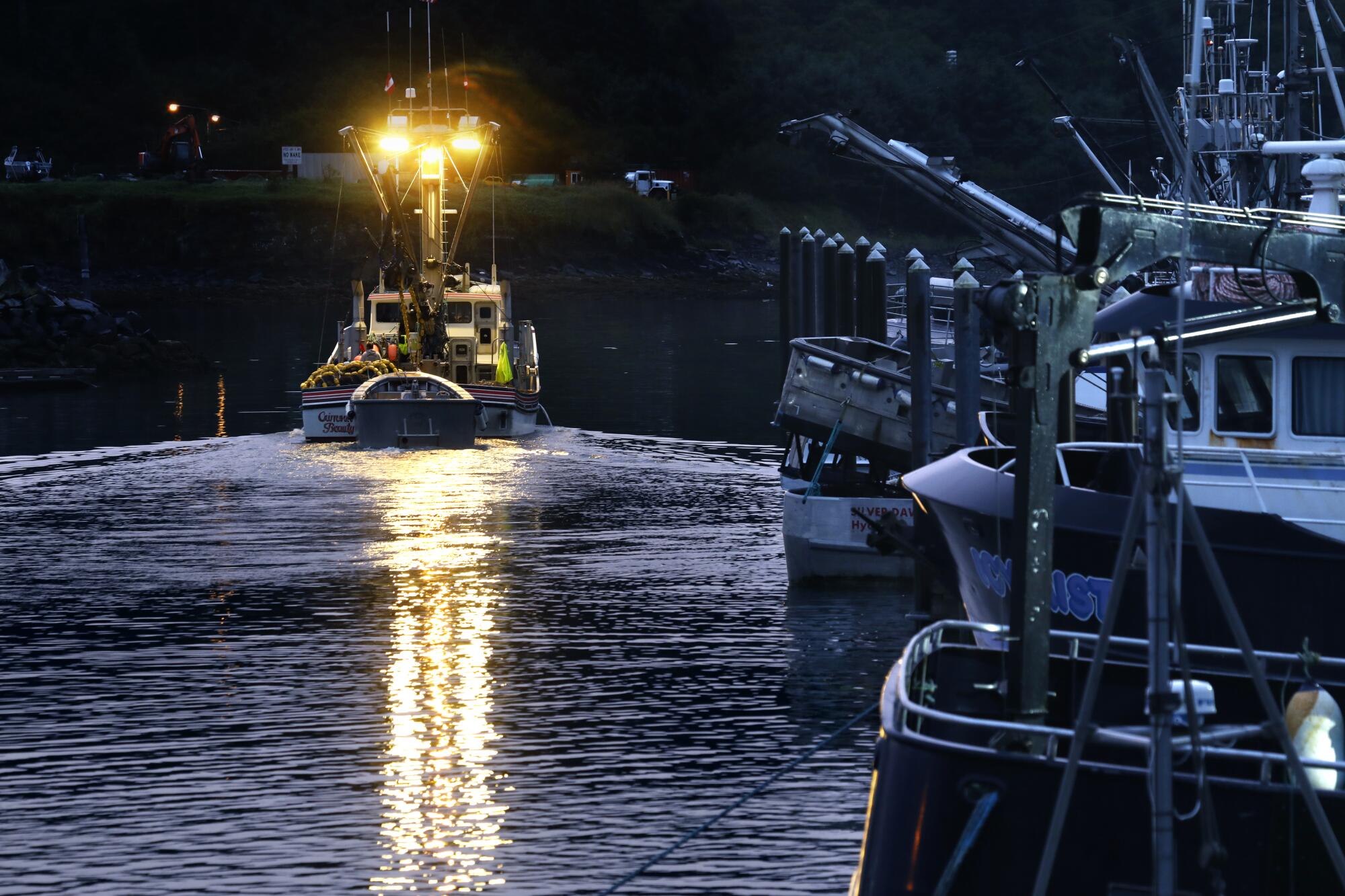
Watch L.A. Times Today at 7 p.m. on Spectrum News 1 on Channel 1 or live stream on the Spectrum News App. Palos Verdes Peninsula and Orange County viewers can watch on Cox Systems on channel 99.
